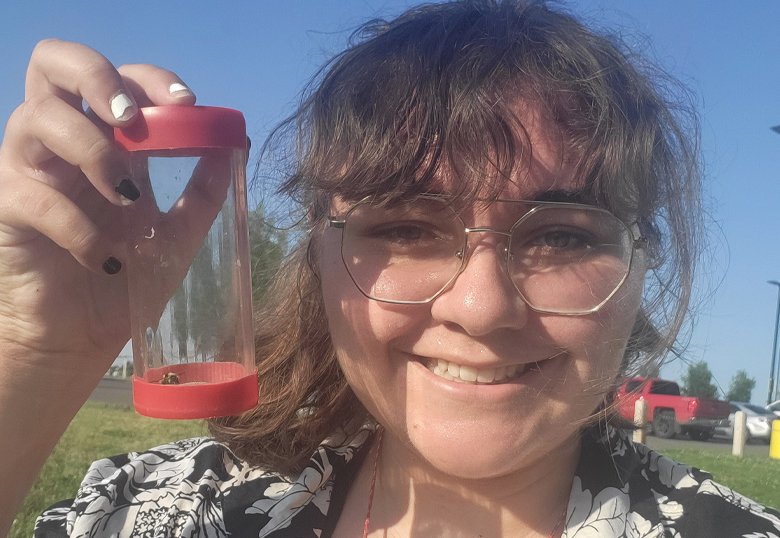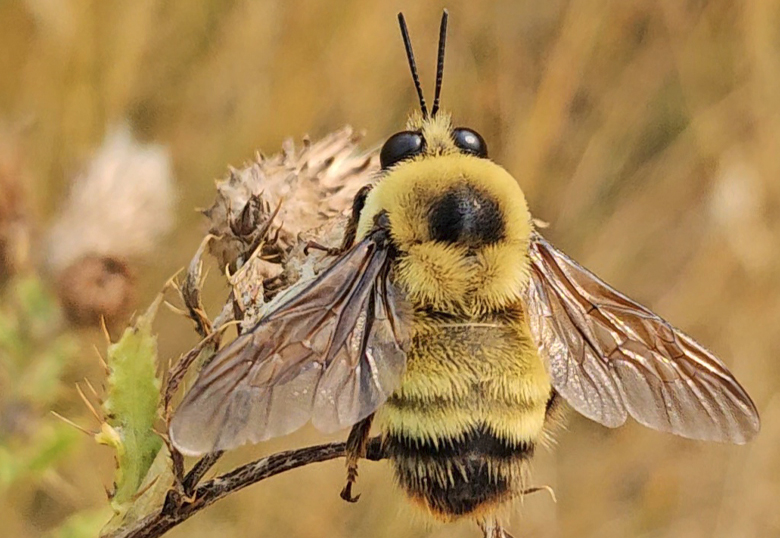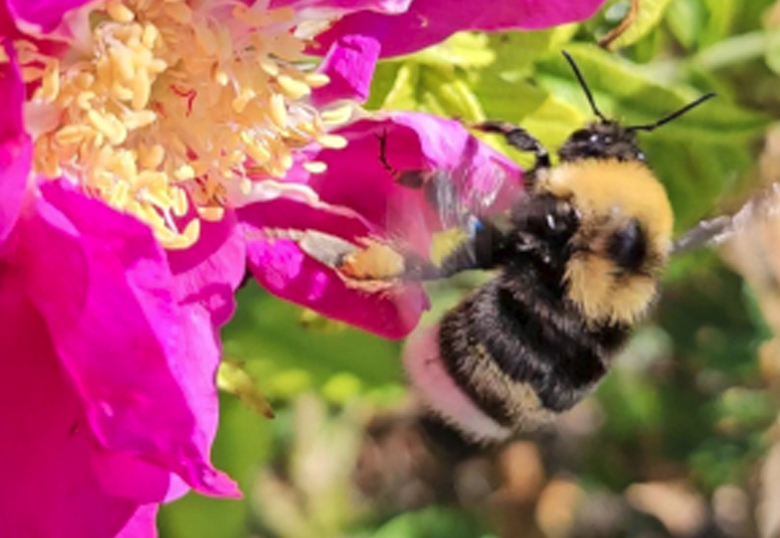Lethbridge bee enthusiasts are buzzing about a new resource that University of Lethbridge student Jessenia Buzunis-Delagneau just released. The free, downloadable book — Bumble Bees of Lethbridge, Alberta — details the bumble bee population in the city, including pictures of each species, the behaviours they exhibit and even the flowers they like to frequent.

“There’s never been a bumble bee guide for Lethbridge, and as part of my thesis project, we were looking at floral interactions of honeybees and bumble bees. I was out searching for all these bumble bees, taking pictures and identifying them and thought it would be kind of cool to bring that all together and have one place where you could look at all the bumble bees that live in our city,” says Buzunis-Delagneau.
She’s identified and detailed 12 of the likely 14 species of bumble bees that occur in Lethbridge. Her observations were compiled from the summer of 2024 and included 364 observed bumble bee floral interactions.
The most prevalent bumble bee in Lethbridge is the Hunt’s Bumble Bee (Bombus huntii), which can be found visiting plants such as yellow sweet clover, the common sunflower, Russian sage and squash flowers. It is identifiable by two orange stripes on its back and other characteristics detailed in the guide.

But why is this guide important? Buzunis-Delagneau and her supervisor Dr. Shelley Hoover (Department of Biological Sciences) explain that conservation of a species begins with understanding.
“One of the things I discovered while I was out identifying bees is that people were interested in what I was doing and would ask a lot of questions,” says Buzunis-Delagneau. “I also kept hearing from people that they’d seen fewer bumble bees in Lethbridge in recent years and studies back that up, showing that bumble bee numbers have been declining in recent years.”
Hoover says that if you want people to take notice, they need to understand the species and its role in the ecosystem.
“I think an important step in conservation science is getting people to care about the animals,” she says. “You can do all the science you want, but it's not going to be acted upon if nobody cares.”
Citizen science has seen an explosion of interest in recent years with the emergence of platforms such as iNaturalist (inaturalist.org). These sites can aid scientists by adding to or filling in data gaps. Bees, especially large-bodied bees like bumble bees, are more frequently observed by civilian scientists, aiding conservation efforts. For Canadian and U.S. bumble bees, the Bumble Bee Watch (bumblebeewatch.org) site was created for civilian scientists to add their photos and observations.

Buzunis-Delagneau sees her book as another tool for people interested in bumble bees to learn a little more about the species.
“I think my hope is basically to just spread the love,” she laughs. “I hope people will download it, have a look at it and learn a little bit about bumble bees, what they’re looking at in their gardens and what they are seeing. Then take some pictures and post them on iNaturalist.”
Those posting to iNaturalist will be identified by the app and by consensus.
The book can be downloaded for free at https://opus.uleth.ca/items/0a82a98e-3b29-4e36-9cdd-caa6f1f57c45.
